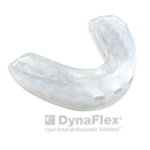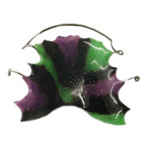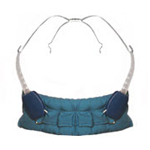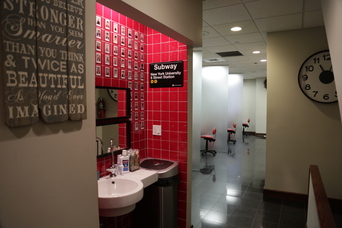A Guide to Orthodontic Appliances: Types, Benefits, and Uses
Orthodontic appliances are essential tools used to correct dental issues and enhance smiles. They come in various types, each designed to address specific needs and ensure effective treatment.
Fixed Appliances
Orthodontists use fixed appliances to correct various dental issues by applying consistent pressure to move teeth into the desired position. These appliances remain attached to the teeth for the duration of the treatment, providing continuous correction.
1. Braces
Braces are the most common fixed orthodontic appliance. They consist of brackets attached to the teeth and connected by wires. Braces come in several types, including metal, ceramic, and lingual.
- Metal Braces: Traditional option, highly effective, and durable.
- Ceramic Braces: Less noticeable than metal braces due to their tooth-colored appearance.
- Lingual Braces: Placed on the back of the teeth, offering an invisible option.
How They Work
Braces use brackets and wires to apply steady pressure on the teeth, gradually moving them into the correct position. Orthodontists periodically adjust the wires to ensure continuous movement until the teeth reach their desired alignment.
Benefits and Considerations
Braces are highly effective for treating a wide range of dental issues, from minor alignment problems to complex bite issues. However, they require regular maintenance and good oral hygiene to prevent complications such as tooth decay or gum disease. Ceramic and lingual braces offer aesthetic benefits, but they may be more expensive and require more care.
2. Expanders
Orthodontists use expanders to widen the upper jaw, creating more space for teeth alignment. The most common types of expanders are palatal expanders and the quad helix.
- Palatal Expanders: Attached to the upper molars, these expanders gradually widen the upper jaw.
- Quad Helix: A fixed expander used to correct narrow arches and crowding.
Purpose and Benefits
Expanders help correct crossbites, create space for crowded teeth, and improve overall dental function. By widening the jaw, they can prevent the need for tooth extractions and make room for all the permanent teeth.
3. Space Maintainers
Orthodontists use space maintainers in pediatric dentistry to hold space for permanent teeth after a child loses a baby tooth prematurely.
Types and Benefits
- Fixed Space Maintainers: Attached to the teeth, these maintainers keep the space open until the permanent tooth erupts.
- Removable Space Maintainers: These are used in situations where a fixed appliance is not necessary or practical.
Space maintainers are crucial in guiding the proper eruption of permanent teeth, preventing future orthodontic issues such as crowding or misalignment. They ensure that there is adequate space for permanent teeth to come in correctly, supporting healthy dental development.
Removable Appliances
Orthodontists use removable appliances to correct dental issues with the convenience of being able to take them out for eating and cleaning. These appliances provide flexibility while still effectively guiding teeth into the desired positions.
1. Aligners

How They Work and Their Benefits
Aligners gradually shift teeth into their correct positions by applying gentle, consistent pressure. Patients wear each set of aligners for about two weeks before moving on to the next set. Aligners are nearly invisible, removable, and allow for easier oral hygiene compared to traditional braces. They also provide a more comfortable option, with no metal brackets or wires to cause irritation.
2. Retainers

- Hawley Retainers: Made of acrylic and wire, these retainers are adjustable and durable.
- Essix Retainers: Clear plastic retainers that are less noticeable.
- Bonded Retainers: Fixed retainers attached to the back of teeth, usually for the lower front teeth.
Importance of Retention Phase
The retention phase is crucial in maintaining the results of orthodontic treatment. Retainers prevent teeth from shifting back to their original positions, ensuring long-term success and stability of the new alignment.
4. Palatal Expanders
Removable palatal expanders serve to widen the upper jaw, similar to their fixed counterparts. These expanders fit into the mouth and apply outward pressure to the teeth and jaw, creating more space for proper alignment.
5. Headgear

6. Functional Appliances
Functional appliances, like the Herbst appliance and twin block, help correct jaw alignment issues by influencing the growth and positioning of the jaw.
Herbst Appliance: This fixed appliance encourages the lower jaw to move forward, correcting overbites.
- Twin Block: Consisting of upper and lower bite blocks, this appliance guides the jaw into a better position.
How They Aid in Jaw Alignment
These appliances work by repositioning the jaw and teeth into proper alignment over time. They are particularly effective during growth spurts in younger patients, leveraging natural development to achieve optimal results.
Why Choose House of Orthodontia?
At House of Orthodontia, we pride ourselves on providing top-quality orthodontic care tailored to meet the unique needs of each patient. Our experienced team uses the latest technology and techniques to ensure efficient, comfortable, and effective treatments. We offer a wide range of orthodontic appliances, from traditional braces to innovative clear aligners, ensuring we have the right solution for everyone.
Schedule Your Free Consultation Today
Ready to achieve the smile of your dreams? Schedule a free consultation with us today. Our team is here to answer any questions and help you choose the best treatment option for your needs. Don’t wait—start your journey to a beautiful, healthy smile with House of Orthodontia now.
Contact Us
Call us or visit our website at www.houseoforthodontia.com to book your appointment. We look forward to welcoming you to our orthodontic family!
Frequently Asked Questions (FAQs)
1. How long does orthodontic treatment take?
The duration of treatment varies depending on individual needs, but most patients complete their treatment within 18 to 24 months. Your orthodontist will provide a more accurate timeline during your consultation.
2. Do braces or aligners hurt?
You may experience some discomfort or soreness when you first get braces or start wearing aligners. This is normal and usually subsides within a few days. Over-the-counter pain relievers can help manage any discomfort.
3. How often do I need to visit the orthodontist?
Regular check-ups are essential for monitoring progress and making necessary adjustments. Typically, patients visit their orthodontist every 6 to 8 weeks.
4. Can adults get orthodontic treatment?
Yes, orthodontic treatment is effective for adults as well as children and teenagers. We offer various discreet options, such as clear aligners and ceramic braces, to suit adult patients.
5. How do I take care of my braces or aligners?
Maintain good oral hygiene by brushing and flossing regularly. For braces, avoid hard or sticky foods that can damage brackets and wires. For aligners, clean them daily and remove them while eating or drinking anything other than water.



 Herbst Appliance: This fixed appliance encourages the lower jaw to move forward, correcting overbites.
Herbst Appliance: This fixed appliance encourages the lower jaw to move forward, correcting overbites.

